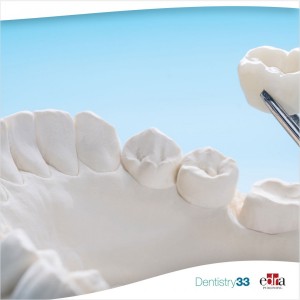
Microbial flora in immediate and delayed implants: a comparative study
Lara Figini
Many factors determine the long-term success or failure of dental implants, and one of them is bacterial contamination. Little is known about the importance of supra and subgingival microbial flora around implants, and the differences in the peri-implant microflora between immediate — placed immediately after tooth extraction — and delayed implants — placed after bone healing following a dental extraction.
Materials and methods
In a study published in the Journal of Dental Implants in July 2020, the authors analyzed microbial flora in the oral cavity before implant placement and during the various stages of implant treatment for both immediate and delayed implants.
A supragingival plaque was registered and removed with sterile cotton pellets. Paper points soaked with supragingival plaque picked up were placed in sterile transport vials filled with 1 ml anaerobic medium and were sent to the laboratory. Bacterial culture media used in the study include blood agar, Kanamycin blood agar, and Kanamycin‑vancomycin blood agar.
The schedules for the collection of sample during the study were:
1) preoperative (before antibiotic regimen) (S1)
2) 1-day postoperative 1st stage surgery (S2),
3) suture removal (7–10 days postoperative) (S3)
4) 2 weeks (S4)
5) 2nd stage surgery (S5)
6) 2 days after abutment connection (S6)
7) on the day of prosthesis placement (S7)
8) 2 days after prosthesis placement (S8)
9) 1‑month recall (follow‑up) (S9), and
10) 2‑month recall (S10).
The collected samples were tested to estimate the growth of the following microorganisms: Streptococcus, Aggregatibacter actinomycetemcomitans, Porphyromonasgingivalis, Prevotella intermedia and Fusobacteriumnucleatum
Results
Streptococci, which are normal commensals of the oral cavity, were consistently observed at higher titers (36% in delayed implants and 35% in immediate ones compared to the rest of the bacterial flora), while other organisms such as P. gingivalis (21% in delayed implants, 22% in immediate implants), Fusobacterium, P (25% vs 24%). intermedia and A. actinomycetemcomitans showed comparatively lower titers, both in cases of immediate and late implantations.
The presence of organisms such as Porphyromonas gingivalis and Fusobacterium, which have pathogenic potential, is of importance.
Conclusions
Delayed or immediate implant placement does not alter the flora of the oral cavity. Organisms present preoperatively remained the same in all phases of the treatment. To prevent the disease, one must continuously monitor the implant. With increasing age changes, the microflora is continually changing in the oral cavity. Periodontal health should be assessed before the placement of the implant, with follow-up appointments after a set period for a better prognosis. Clinical and radiographic monitoring could help in recognizing the potential for peri-implantitis and in the prevention of the same for better prognosis.
Hiremath, Keerthi G, Viraj N Patil, Zarir Ruttonji, Preethi Kusugal, K M Sushma, Preeti Astagi. “Comparative Evaluation of Changes in Microflora in Delayed and Immediate Implant Placement: An In vivo Study.” Journal of Dental Implants. July 2020 Volume 10, Issue 1; P. 16-22.
 Related articles
Related articles
Periodontology 28 April 2025
Peri-implant diseases: Consensus Report of the Sixth European Workshop on Periodontology
Issues related to peri-implant disease were discussed. It was observed that the most common lesions that occur, i.e. peri-implant mucositis and peri-implantitis are caused by bacteria.
Integral Dental has announced the launch of its first product, OraclePI, the only early diagnostic test for peri-implant disease.
Oral surgery 08 September 2023
The objective of the study is to provide surgeons with a reference to optimize surgical procedures that can result in improved hygiene, long-term maintenance, acceptable functional and esthetic...
Periodontology 07 June 2023
Peri-implant diseases diagnosis, prognosis and dental implant monitoring
The diagnosis of peri-implantar and periodontal relies mainly on a set of clinical measures and the evaluation of radiographic images. However, these clinical settings alone are not sufficient to...
Authors: Morena Petrini, Matteo Mancini, Giovanna Iezzi, Adriano Piattelli, Emanuela Di Campli, Simonetta D’Ercole
Peri-implant disease includes both a reversible inflammatory process, called peri-mucositis and peri-implantitis, in which progressive reabsorption of the supporting bone causes irreversible...
 Read more
Read more
Editorials 10 October 2025
With proud smiles and crisp white coats, ninety-three learners from the DDS Class of 2029 and the International Dentist Pathway Class of 2028 marked the start of their dental careers at the UCSF...
Periodontology 10 October 2025
Continuous professional development (CPD) in Periodontology refers to the overall framework of opportunities that facilitate a life-long learning practice, driven by the learner-practitioner and...
TheraBreath, the #1 alcohol-free mouthwash brand in the U.S.*, has introduced a new line of dentist-formulated, clinically tested toothpastes designed to support professional oral care...
News 10 October 2025
New officers and trustees were installed at the Minnesota Dental Association’s Leadership Conference on September 19 in Minneapolis.
News 10 October 2025
Smartee Denti-Technology today announced that Professor Gang Shen, its Chief Scientist and Executive President of TaiKang ByBo Dental, has once again been named to the World’s Top 2% Scientists...















